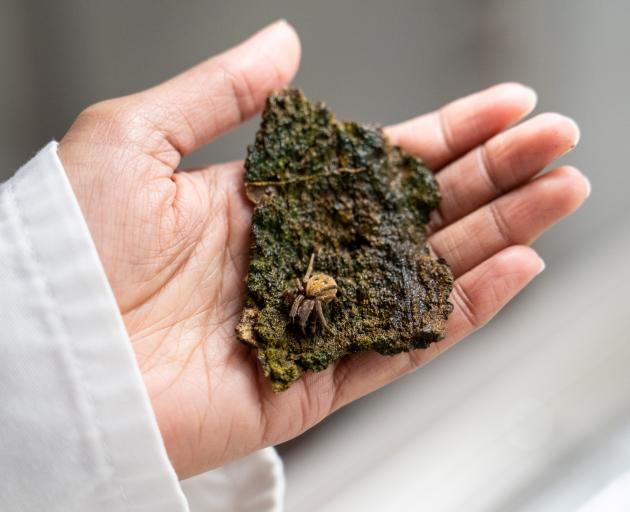Science
Parasitic Worms Transform Spiders into Mindless Zombies

Researchers in New Zealand are uncovering the unsettling impact of parasitic nematodes, known as mermithids, which transform spiders into what can only be described as mindless “zombies.” Usha Mendis, a PhD student at Lincoln University, is dedicated to understanding this bizarre phenomenon and its implications for local ecosystems.
Mendis is focusing on how these parasites target various invertebrates, including caddisflies, mayflies, grasshoppers, and numerous endemic spider species. She has identified three distinct types of spiders affected by the mermithids, which poses a significant threat to biodiversity in New Zealand, where over 90% of spider species are endemic. “If something were to happen to them, it would not be good for our biodiversity,” Mendis emphasized.
Understanding the Parasite’s Life Cycle
The mermithids hijack the spiders’ biological systems, altering their behavior and physical form. Infected spiders often exhibit abnormal growth, characterized by thicker legs, a swollen abdomen, and a general appearance reminiscent of zombies. Mendis explained, “They can be very abnormal. Their legs get shorter but thicker, and the spider is physically changing.”
Despite these observable changes, the only definitive sign of infection occurs when the spider dies, allowing the nematode to emerge and continue its lifecycle. Researchers are still investigating how these parasites initially invade their spider hosts, a question that remains unanswered.
Mendis described the relationship between the nematodes and their hosts as a symbiotic one, albeit a lethal one for the spider. “They can’t live without a host. They consume the energy and nutrients of the host and grow inside it,” she noted. To progress to their next life stage, the nematodes require moisture, which leads the infected spiders to seek out wet environments. Tragically, this often results in the spiders being found drowned.
Implications for Ecosystems and Future Research
The discovery of mermithids in New Zealand is relatively recent, with the first reports emerging only 35 years ago. Mendis is utilizing water traps to collect samples of the nematodes as part of her ongoing research. “There is still more to do before we can fully understand their relationship with spiders,” she stated.
As Mendis continues her investigation, she urges the public to reconsider their perceptions of spiders. Despite their potentially unsettling appearance, she highlights their vital role in maintaining ecological balance. “Spiders may look disruptive and creepy, but they’re not the enemy. They’ve got their own problems to deal with,” she concluded.
Understanding the intricate dynamics of these parasitic relationships is crucial for conservation efforts. As Mendis dives deeper into her research, the hope is to shed light on how to protect the biodiversity that is so essential to New Zealand’s unique ecosystems.
-

 World4 months ago
World4 months agoTest Your Knowledge: Take the Herald’s Afternoon Quiz Today
-

 Sports4 months ago
Sports4 months agoPM Faces Backlash from Fans During Netball Trophy Ceremony
-

 Lifestyle4 months ago
Lifestyle4 months agoDunedin Designers Win Top Award at Hokonui Fashion Event
-

 Entertainment4 months ago
Entertainment4 months agoExperience the Excitement of ‘Chief of War’ in Oʻahu
-

 Sports4 months ago
Sports4 months agoLiam Lawson Launches New Era for Racing Bulls with Strong Start
-

 World5 months ago
World5 months agoCoalition Forms to Preserve Māori Wards in Hawke’s Bay
-

 Health4 months ago
Health4 months agoWalking Faster Offers Major Health Benefits for Older Adults
-

 Lifestyle4 months ago
Lifestyle4 months agoDisney Fan Reveals Dress Code Tips for Park Visitors
-

 Politics4 months ago
Politics4 months agoScots Rally with Humor and Music to Protest Trump’s Visit
-

 Top Stories5 months ago
Top Stories5 months agoUK and India Finalize Trade Deal to Boost Economic Ties
-

 Health2 months ago
Health2 months agoRadio Host Jay-Jay Feeney’s Partner Secures Visa to Stay in NZ
-

 World5 months ago
World5 months agoHuntly Begins Water Pipe Flushing to Resolve Brown Water Issue









